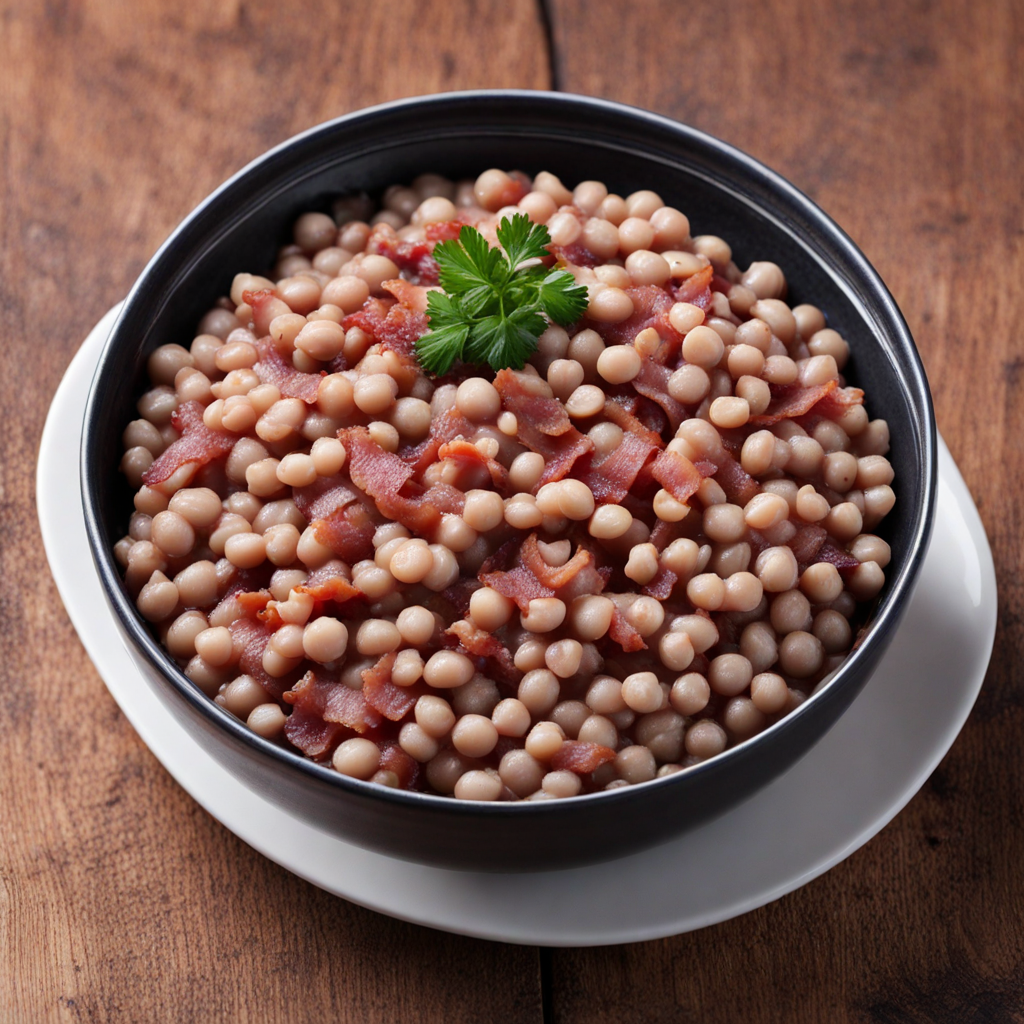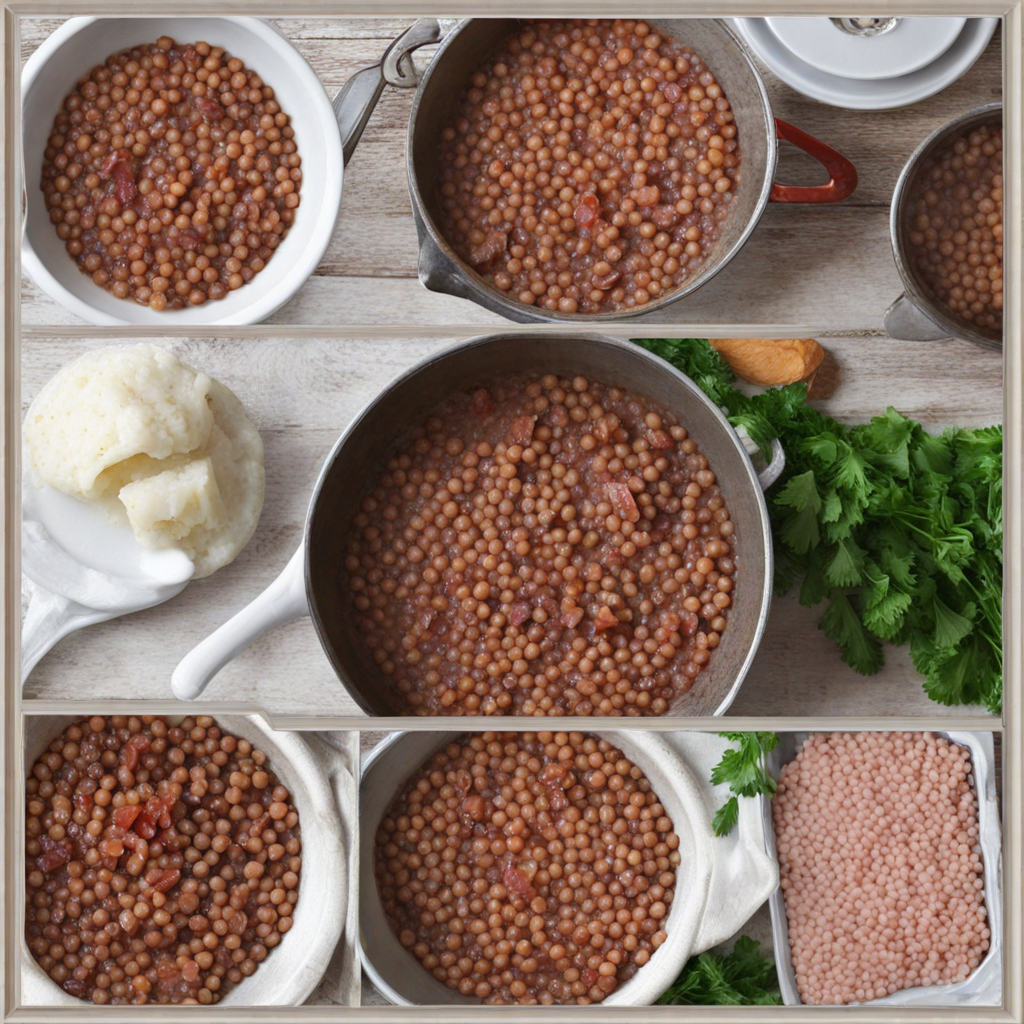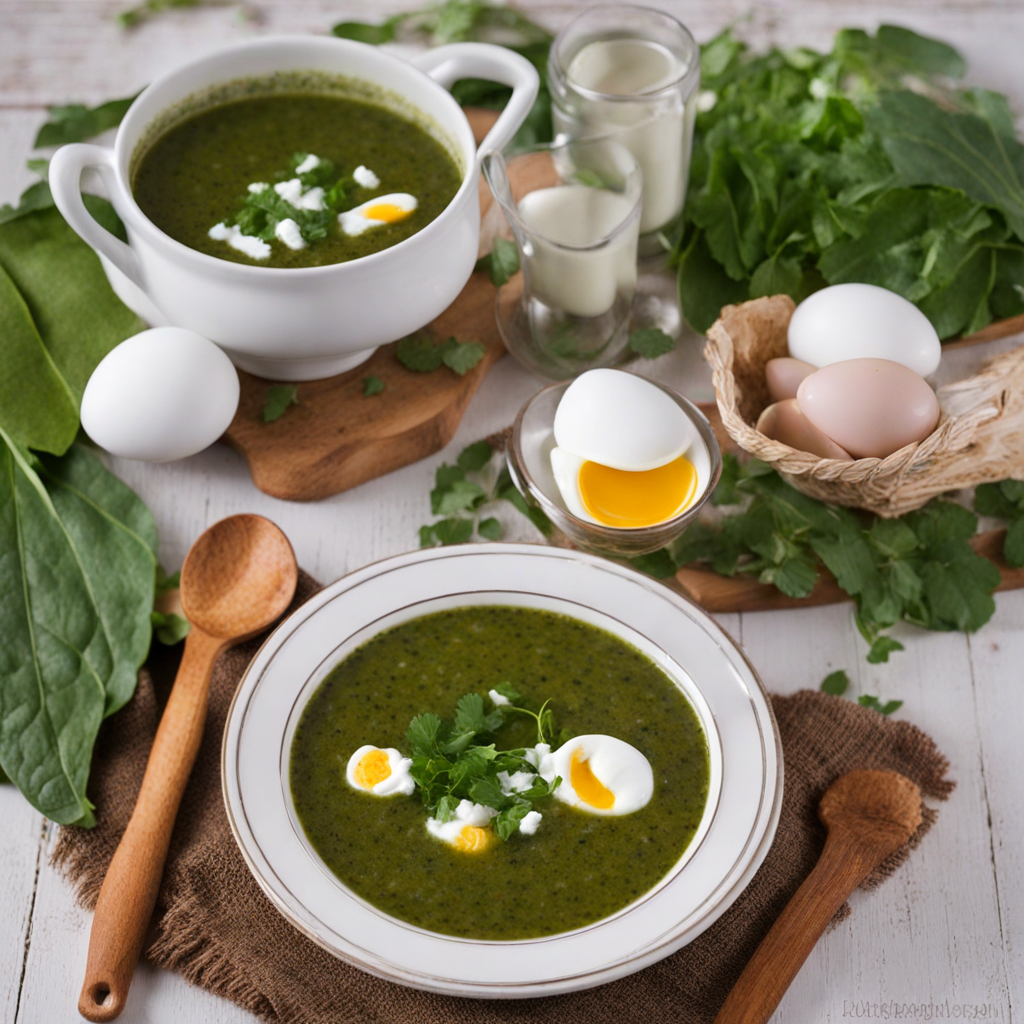Grey Peas with Bacon
Pelēkie zirņi ar speķi, which translates to "gray peas with bacon," is a traditional Latvian dish that showcases the country's rich agricultural heritage and culinary simplicity. This dish, emblematic of Latvian comfort food, has its roots in rural Latvia, where local farmers relied on hearty, accessible ingredients to sustain themselves through long winters. Gray peas, a staple in Latvian cuisine, are often associated with the peasant diet and have been cultivated in the region for centuries, providing essential nutrition and flavor. The primary ingredient, gray peas (or "pelēkie zirņi"), are known for their earthy flavor and dense texture. They are typically small and round, with a muted grayish hue, which gives the dish its name. Traditionally, these peas are dried and can be stored for extended periods, making them an ideal food source for the harsh Baltic winters. The dish is often prepared during Lent or other fasting periods when meat consumption is limited, but it has evolved into a beloved staple enjoyed year-round. The preparation of Pelēkie zirņi ar speķi is straightforward yet requires a bit of patience. First, the dried gray peas are soaked in water overnight to soften them, which helps reduce cooking time. After soaking, they are drained and boiled in fresh water until they reach a tender consistency. This process typically takes about 1 to 1.5 hours. While the peas are simmering, the accompanying ingredient—bacon (or "speķ
How It Became This Dish
Origin of Pelēkie zirņi ar speķi Pelēkie zirņi ar speķi, a traditional Latvian dish, translates to "gray peas with bacon." This dish hails from Latvia's agrarian roots, where peas were a staple crop due to their hardiness and nutritional value. The history of gray peas can be traced back to the 18th century when they were cultivated extensively throughout the Baltic region. The peas were favored not only for their flavor but also for their ability to grow in the harsher climates of Northern Europe, making them an essential food source during long winters. The use of bacon, or speķis, in this dish adds a rich, savory flavor that complements the earthy taste of the peas. Bacon has been a part of Latvian cuisine for centuries, reflecting the country’s deep-seated traditions of pig farming and meat preservation. The combination of gray peas and bacon is emblematic of rural Latvian cooking, which often emphasizes simple, hearty ingredients that can sustain families through the harsh winters. \n\n Cultural Significance Pelēkie zirņi ar speķi holds a significant place in Latvian culture, often served during festive occasions, family gatherings, and traditional holidays. It is particularly associated with the celebration of Midsummer (Jāņi), a time when Latvians gather to celebrate the summer solstice, and with Christmas, where it is often part of the festive meal. This dish is more than just food; it represents a connection to Latvian heritage and the agrarian lifestyle that has shaped the country’s identity. In Latvia, food is often intertwined with national pride and cultural heritage. The act of preparing and sharing Pelēkie zirņi ar speķi brings families together, allowing for the transmission of culinary traditions from one generation to the next. It serves as a reminder of the resourcefulness of Latvian ancestors who utilized locally available ingredients to create nourishing meals. Furthermore, the dish is symbolic of the Latvian spirit, characterized by resilience and simplicity, mirroring the lives of those who have farmed the land for generations. \n\n Development Over Time Over the years, Pelēkie zirņi ar speķi has evolved, adapting to modern tastes while still preserving its traditional roots. In the early 20th century, as Latvia experienced significant political and social changes, the dish began to appear in cookbooks and culinary literature, cementing its status as a quintessential Latvian food. However, during the Soviet era, the availability of certain ingredients fluctuated, which led to variations in how the dish was prepared. In urban areas, where fresh ingredients were harder to come by, cooks began to adapt the recipe to include more accessible components, such as canned peas and different types of preserved meats. Despite these adaptations, the core elements of Pelēkie zirņi ar speķi remained intact. The dish continued to be a comfort food for many Latvians, evoking nostalgia for simpler times. In contemporary Latvia, the dish has seen a resurgence in popularity as part of a broader movement to celebrate and preserve traditional Latvian cuisine. Chefs in both home kitchens and restaurants are increasingly focusing on local and traditional ingredients, reviving older recipes and presenting them in innovative ways. \n\n Modern Interpretations Today's interpretations of Pelēkie zirņi ar speķi often include additional elements that reflect modern culinary trends. While the classic version features gray peas, onions, and bacon, contemporary chefs may incorporate herbs, spices, or even other vegetables to enhance the dish's flavor profile. Some may experiment with different types of bacon or include smoked variants to add depth. Additionally, with the rise of vegetarian and vegan diets, there have been versions of this dish that substitute bacon with plant-based alternatives, allowing more people to enjoy the flavors of this traditional meal without compromising their dietary choices. This adaptability ensures that Pelēkie zirņi ar speķi remains relevant in the ever-evolving landscape of global cuisine. \n\n Global Recognition As Latvia has gained recognition on the world stage, so too has its culinary heritage, including Pelēkie zirņi ar speķi. The dish has been featured in various food festivals and international culinary events, allowing chefs and food enthusiasts from around the globe to discover and appreciate Latvian cuisine. This exposure has contributed to a growing interest in traditional Latvian dishes, as more people seek to explore the flavors of this Baltic nation. Moreover, the promotion of food tourism in Latvia has encouraged visitors to engage with local culinary traditions, including the preparation and tasting of Pelēkie zirņi ar speķi. Local restaurants and food markets have begun to offer cooking classes and tasting events centered around this dish, providing tourists with a unique opportunity to connect with Latvia’s culinary history and its people. \n\n Conclusion Ultimately, Pelēkie zirņi ar speķi embodies the essence of Latvian cuisine: simple, hearty, and deeply rooted in traditions. As it continues to evolve, this dish remains a powerful symbol of Latvia's agricultural heritage and cultural identity. Whether enjoyed at a festive gathering or as a comforting meal at home, Pelēkie zirņi ar speķi serves as a delicious reminder of the flavors and stories that have shaped Latvia’s culinary landscape over the centuries. In its rich history and contemporary adaptations, Pelēkie zirņi ar speķi stands testament to the enduring nature of food as a vessel for culture, community, and connection.
You may like
Discover local flavors from Latvia







